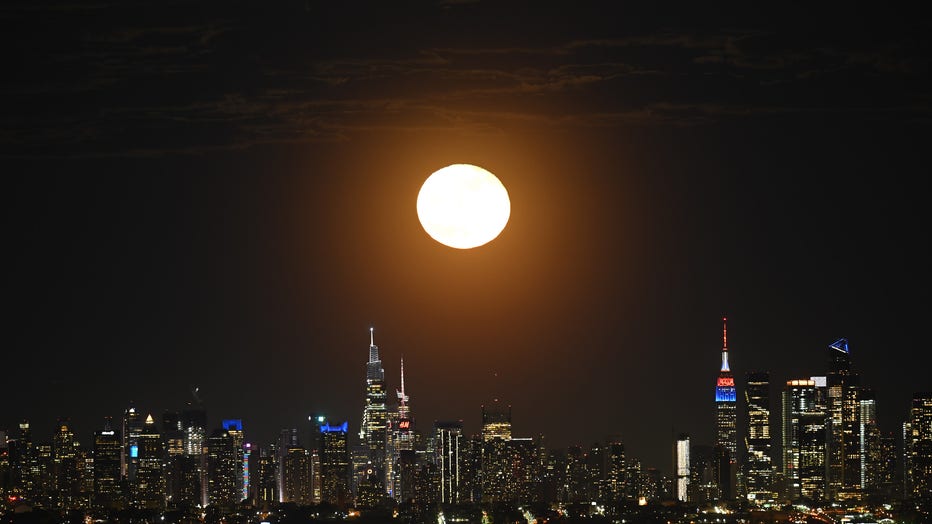May's full Flower Moon happening soon: What to know

Micromoon vs. Supermoon: Stunning video compares the two
Filmed from the mountains of Colorado, a videographer shows the difference between micromoon and supermoon events.
The Full Flower Moon is set to illuminate the skies on May 23, 2024, according to the U.S. Naval Observatory.
That night, the moon will reach its peak fullness at 9:53 p.m. ET, the agency reports.
This celestial event is not just a visual treat but also offers a unique astronomical occurrence as the moon will pass in front of Antares, the brightest star in the Scorpius constellation, visible from specific regions.
Best places to view the Full Flower Moon and Antares occultation

The Full Flower Moon rises above Midtown Manhattan during night time in New York City, United States on May 6, 2023. (Photo by Lokman Vural Elibol/Anadolu Agency via Getty Images)
For those eager to witness the moon occulting Antares, the southeastern U.S., parts of Central America, northeastern South America, the Caribbean, and some areas on the western coast of Africa offer prime viewing spots.
RELATED: Earth’s quasi-moon Asteroid Kamo'oalewa likely blasted out of this giant moon crater
Cities like Charleston, Savannah, and Miami in the U.S. will experience the occultation with times ranging from 9:09 p.m. to 10:18 p.m. ET.
Further afield, in Belem, Brazil, the occultation will occur between 11:02 p.m. and 12:39 a.m. local time, and in Lagos, Nigeria, it will span from 4:15 a.m. to 5:23 a.m. local time.
Understanding the Flower Moon: May's seasonal full moon

NASA ordered to give moon its own 'time zone'
The Biden administration has given the space agency until the end of 2026 to hammer out a new "time zone" specific to the moon. LiveNOW from FOX's Josh Breslow spoke with Professor Catherine Heymans, Scotland's Astronomer Royal about the reasons behind this.
The "Flower Moon" is the name given to the full moon that occurs in May, according to the Almanac. This name is traditionally linked to the abundance of flowers that bloom during this month in the Northern Hemisphere.
The naming convention comes from Native American, Colonial American, and other traditional North American folklore, which often named the full moons based on natural cues and seasonal changes of the environment.
RELATED: Phone home? NASA, Nokia plan first-ever cellular network on moon
Other names for the May full moon include the Corn Planting Moon and the Milk Moon. Each of these names highlights specific aspects of the season, reflecting the agricultural and natural patterns observed by early societies to mark time throughout the year.
Other celestial events on May 23
According to Space.com, other celestial bodies will be visible apart from the full moon and its encounter with Antares.
Saturn and Mars can be observed in the predawn sky on May 24 in New York City, with Saturn rising first at 2:25 a.m. ET and Mars at 3:31 a.m. ET.
Both planets will be visible in their respective constellations, Aquarius and Pisces, making them standout features in the night sky.
For observers in the Southern Hemisphere, Saturn, Mars, and even Mercury will be visible higher in the sky due to the approach of the winter solstice in June, providing a spectacular view of these planets aligned from north to east.
This night promises to be a remarkable one for stargazers, offering a variety of celestial phenomena to enjoy.

